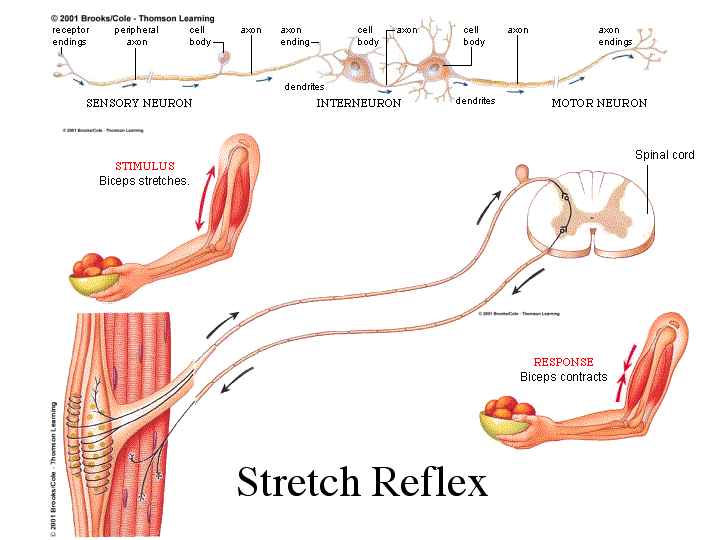
Neuron Circuits
Neuron circuits or pathways will determine the direction a signal will travel. In the brain,
neurons are organized into regional blocks that receive, integrate, and then send out signals.
The circuits may be divergent, convergent, or reverberating:
- Convergent circuit - Signals from many neurons are sent on to just a few.
- Divergent circuit - Signals from one neuron are sent out to many others.
- Reverberating circuit - A circular circuit that returns a signal to its source.
Signals between brain or spinal cord and body regions travel by nerves. Axons of sensory neurons,
motor neurons, or both, are bundled together in a nerve. Within the brain and spinal cord, such
bundles are called nerve pathways, or "tracts."
Many axons are covered by a myelin sheath derived in part
from Schwann cells. Each section of the sheath is separated from adjacent ones by a node where the
axon membrane (plentiful in gated sodium channels) is exposed. The action potentials jump from node
to node, which is fast and efficient.
This animation (Audio - Important) describes
action potential propagation.
Reflex Arcs
Reflexes are simple, stereotyped movements made in response to sensory stimuli.
- In the simplest reflex, the reflex arc, sensory neurons directly synapse on motor neurons. Most
reflexes involve an interneuron.
- In the stretch reflex, receptors of sensory neurons (muscle spindles) transmit impulses to the
spinal cord where direct synapses with motor neurons occur.
- In the withdrawal reflex, interneurons in the spinal cord can activate or suppress motor
neurons as necessary for a coordinated response.
These two animations (Audio - Important) describe the stretch reflex
stretch reflex 1,
stretch reflex 2.
Take a look at the
Information Processing in the Spinal Cord Tutorial.
PREVIOUS
NEXT
LECTURE 23 INDEX
MAIN INDEX

